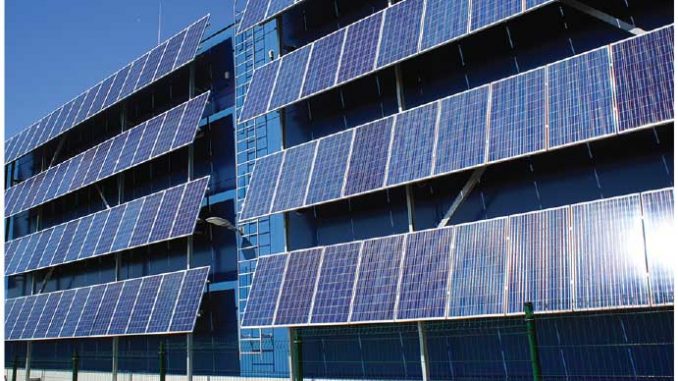
The buildings sector accounts for 33 per cent of the total energy consumption in India. According to NITI Aayog, energy demand from Indian buildings is estimated to increase by more than 800 per cent in 2047 from the 2012 level. This provides a significant energy saving potential in the buildings sector given that the estimated commercial building stock is expected to increase from 1.4 billion m2 to almost 2.2 billion m2 by 2037.
In this regard, the most important policy tool has been the Energy Conservation Building Code (ECBC) aimed at reducing energy consumption and promoting low-carbon growth. It was revised in 2017 by the Ministry of Power (MoP) and the Bureau of Energy Efficiency (BEE). The code prescribes energy performance standards for new commercial buildings with a connected load of 100 kW and more or contract demand of 120 kVA or more.
It has set parameters for builders, designers and architects to integrate renewable energy sources in building design, with a goal of achieving a 50 per cent reduction in energy use by 2030. The ECBC 2017 has defined three tiers of energy performance – ECBC (requires 25 per cent less energy than a typical building), ECBC+ (requires 35 per cent less energy than a typical building), and SuperECBC (requires 50 per cent less energy than a typical building). The successful adoption of ECBC 2017 is expected to translate into energy savings of around 300 billion units by 2030, peak demand reduction of over 15 GW in a year and CO2 reduction of 250 million tonnes. This will be equivalent to cost savings of Rs 350 billion.
In 2018, the MoP announced the ECO Niwas Samhita 2018, which is the ECBC for residential buildings. The implementation of this code is expected to boost energy efficiency in the residential sector, its occupants, and the larger environment by promoting energy efficiency in the design and construction of houses, apartments and townships. In addition, UNDP, in collaboration with the BEE, executed the Energy Efficiency Improvements in Commercial Buildings (EECB) project. The feasibility analysis of 14 demonstration commercial buildings under the EECB project shows that an ECBC-compliant building costs 2-3 per cent more than a conventional building. A significant part of the incremental cost gets compensated against the optimised design and reduced sizing for lighting, heating, ventilation and air conditioning (HVAC), transformers, backup, etc. The feasibility reports also report 30-40 per cent higher energy savings than conventional buildings. Through the energy savings, the incremental cost can be recovered within three to four years.

Issues and challenges
A key issue in the implementation of the ECBC is that the states are ill-equipped to enforce ECBC compliance. There is also a need to facilitate coordination between the central and state governments, and properly delegate responsibilities to urban local bodies (ULBs).
There are technical barriers in the form of limited understanding of building physics and energy simulation tools for large buildings. The designers and technical consultants are the actual “users” of the code. Hence, training programmes must aim to increase user knowledge in terms of building materials, testing and modelling of mechanical systems. Another problem is the principal agent issue, or the split incentive issue. The responsibility of executing ECBC lies with municipalities and ULBs. However, even though they incur the costs, they do not directly enjoy the benefits of ECBC. To this end, real estate developer associations can be included on a wider scale to incorporate forward-thinking solutions such as incentive programmes.
The ECBC must be enforced at the state level, and complemented with a proper incentive mechanism. The role of technical experts is also crucial to the adoption and implementation of state-specific approaches. Going forward, a tiered approach is needed for the effective implementation of the code.
